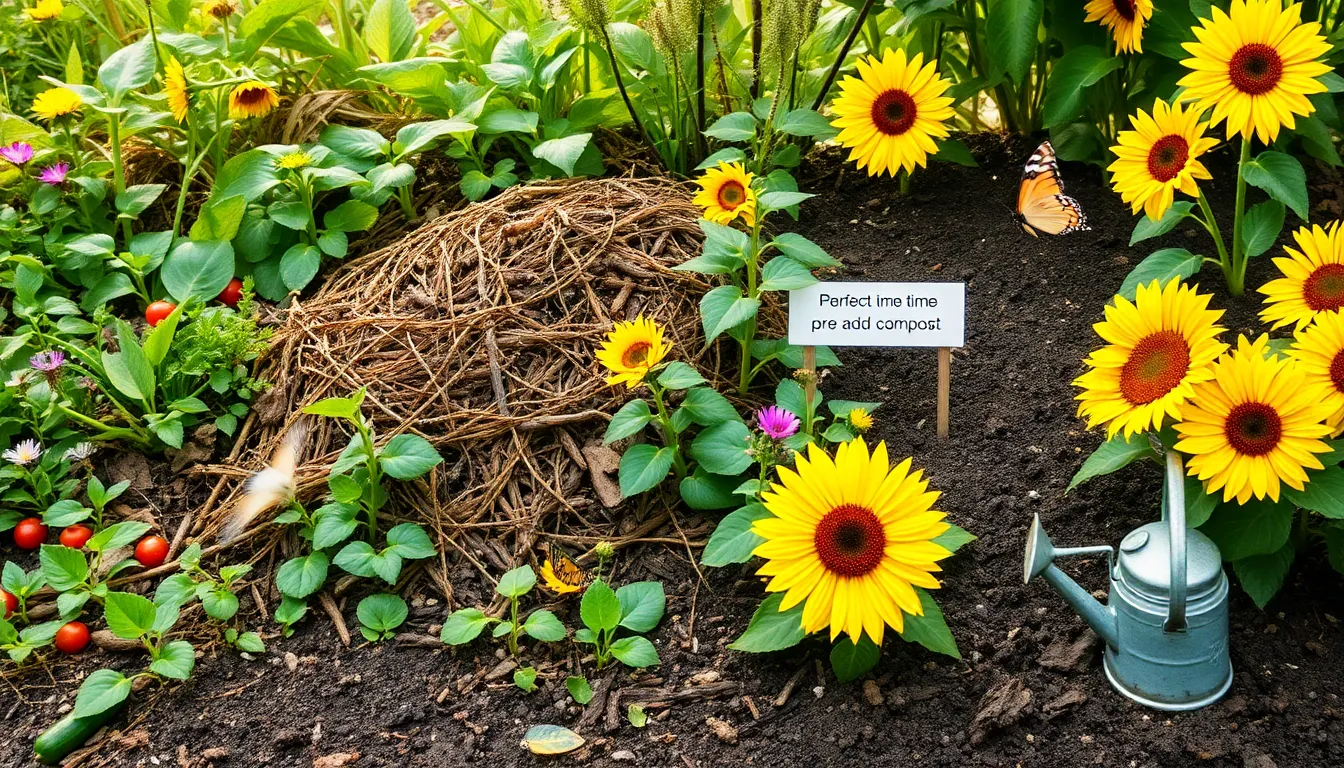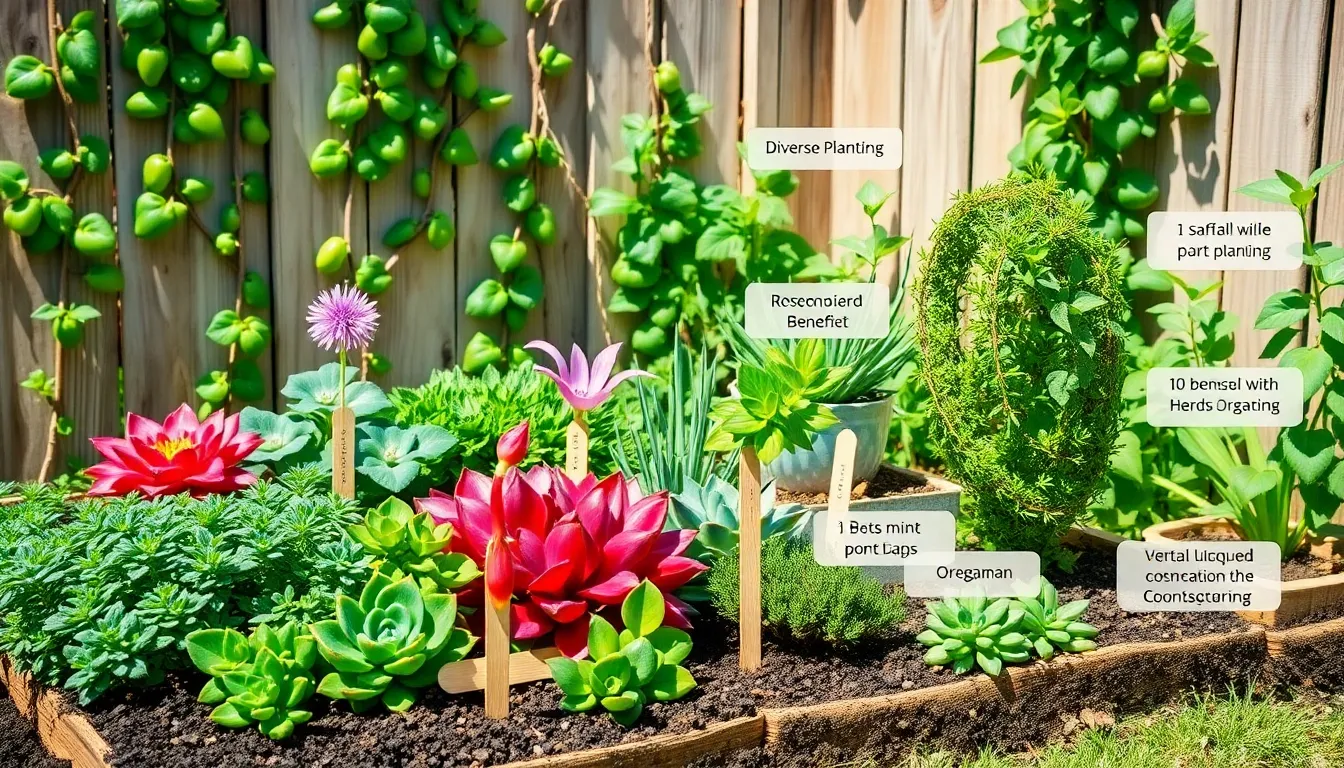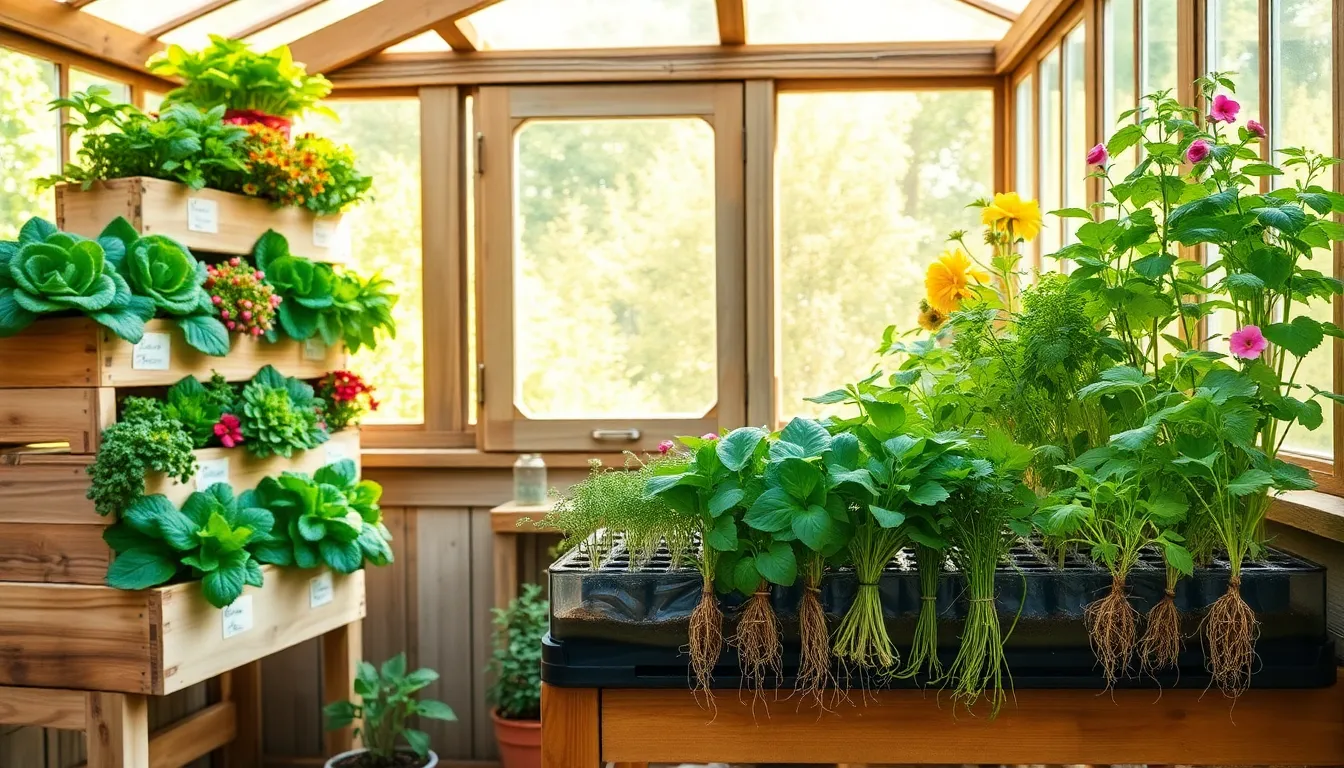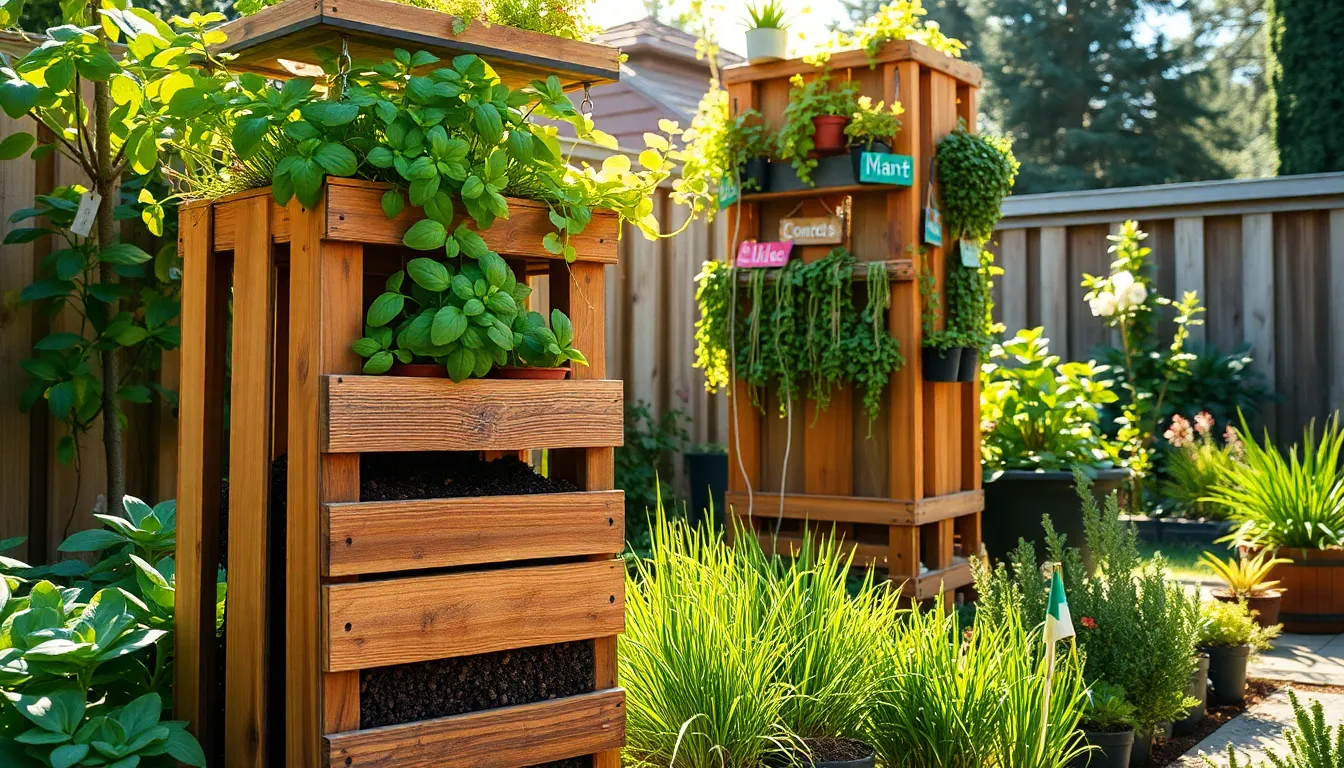Composting is the heart of any thriving garden, transforming kitchen scraps and yard waste into nutrient-rich gold for your soil. Whether you’re just starting your gardening journey or you’ve been nurturing plants for years, understanding the nuances of seasonal composting can elevate your gardening practice to new heights. By tailoring your composting approach to the rhythms of the seasons, you not only enhance the health of your soil but also contribute to a more sustainable environment.
In this article, we will guide you through the art of composting with nine seasonal strategies that cater to the unique needs of each time of year. From the brisk winds of autumn that call for leaf gathering to the vibrant growth of spring that benefits from enriched soil, you’ll discover how to harness nature’s cycles to your advantage. Our comprehensive guide will offer actionable tips and insights, ensuring that your compost pile is always working optimally, regardless of the season.
You’ll learn how to adapt your composting techniques to the specific challenges and opportunities each season presents, whether it’s managing moisture levels in winter or balancing greens and browns in summer. This dynamic approach not only keeps your garden flourishing but also makes composting a rewarding and manageable task. With each turn of the season, you’ll gain confidence and skill, nurturing not just your plants, but your passion for gardening as well.
Collect Seasonal Compost Materials
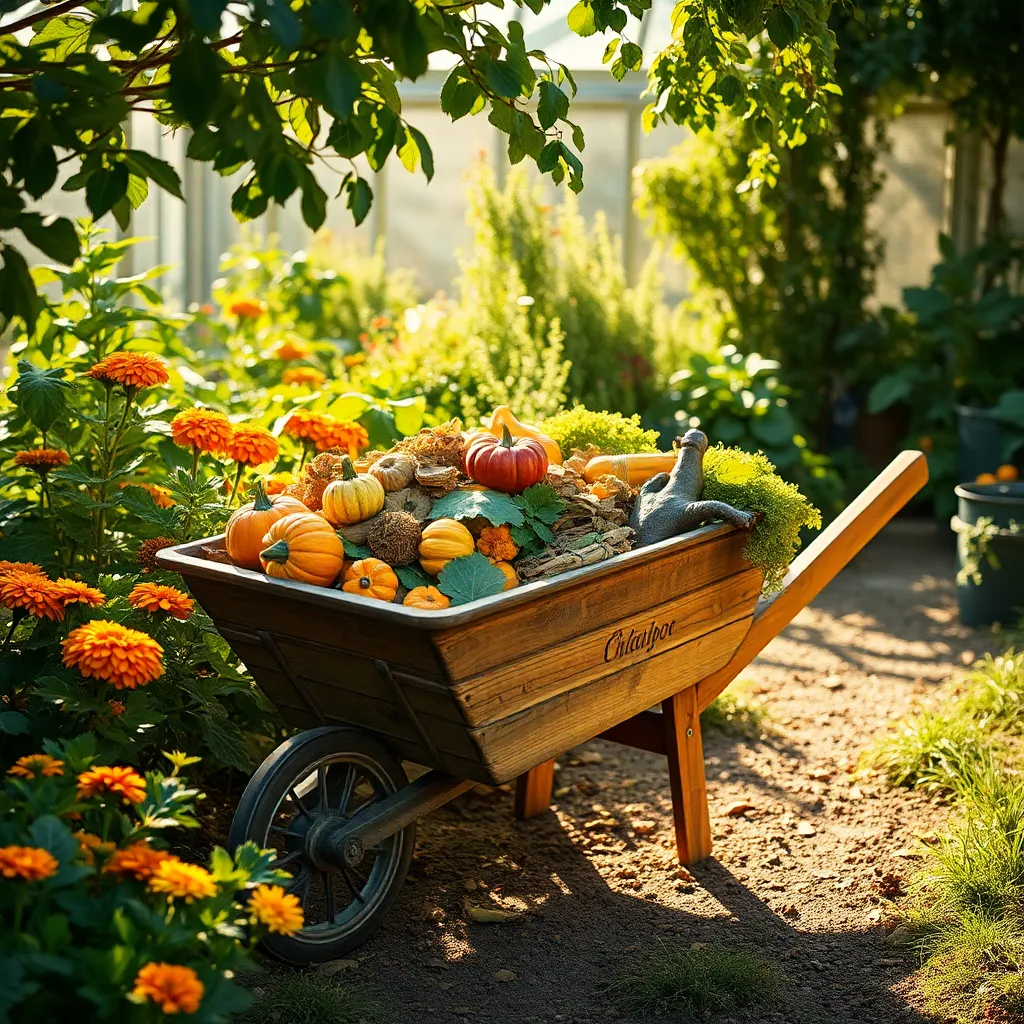
To create a thriving compost pile, gather a mix of *green* and *brown* materials. Green materials like grass clippings and vegetable scraps provide nitrogen, while brown materials such as dried leaves and twigs supply carbon.
In fall, take advantage of the abundance of fallen leaves, which are perfect brown materials. Shred them first to speed up decomposition and mix them into your compost pile with green materials for balance.
Winter can be challenging, but it’s still possible to collect compost materials. Consider using kitchen scraps like coffee grounds and eggshells, which are rich in nutrients and can be stored in a covered bin until the weather warms up.
For those with a bit more experience, try setting up a compost bin that retains heat during colder months. This allows decomposition to continue and provides a steady supply of compost even when outdoor temperatures drop.
Layer Brown and Green Waste
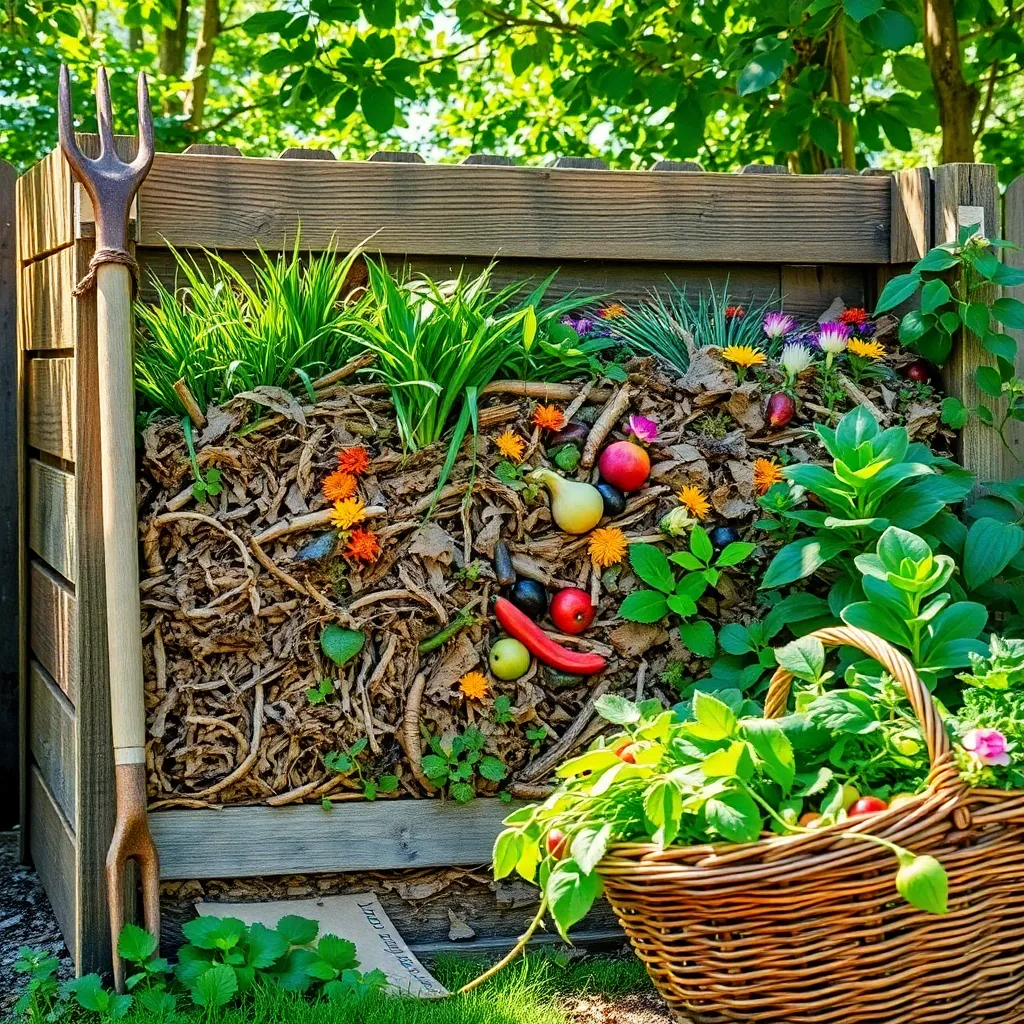
When building your compost pile, it is essential to layer brown and green waste to achieve the best results. This technique helps maintain the right balance of carbon and nitrogen, which is crucial for effective decomposition.
Brown waste, such as dried leaves, straw, and cardboard, provides the carbon necessary for the composting process. Green waste, like grass clippings, vegetable scraps, and coffee grounds, supplies nitrogen, which is vital for microbial growth.
Start by adding a layer of brown waste about six inches deep, followed by a similar layer of green waste. It’s a good idea to alternate these layers to ensure the pile decomposes evenly and efficiently.
Make sure each layer is moistened slightly as you build your pile to maintain the right moisture level, akin to a damp sponge. Proper moisture is crucial, as it helps the microorganisms break down the material more effectively.
For those looking for an advanced tip, consider adding a thin layer of soil or finished compost between your brown and green layers. This introduces beneficial microorganisms directly into your pile, accelerating decomposition.
Maintain Optimal Moisture Levels
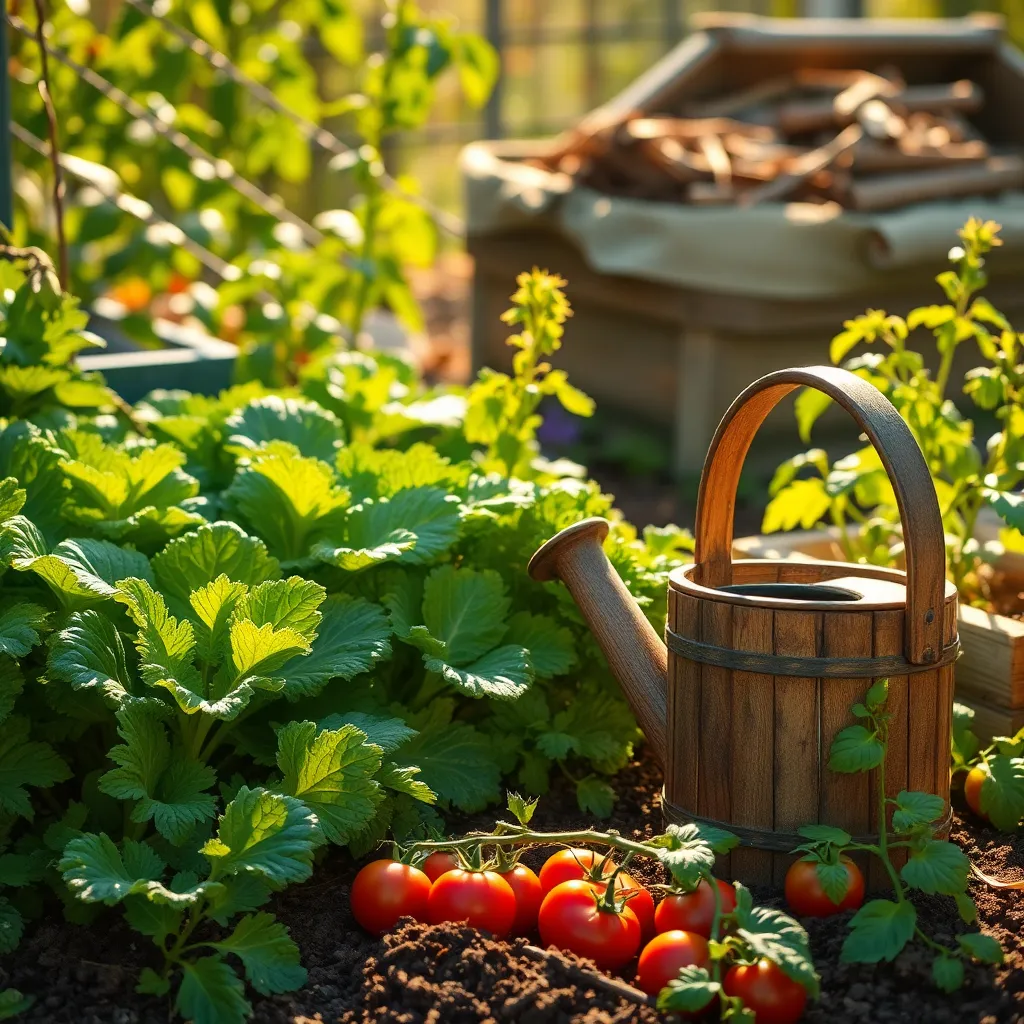
Maintaining the right moisture level is crucial for successful composting. The compost pile should be moist, resembling a damp sponge, to support microbial activity.
It’s important to check the moisture level regularly, especially during dry spells. If the compost feels too dry, add water gradually while turning the pile to distribute moisture evenly.
Adding water isn’t the only solution; incorporating high-moisture green waste like fruit scraps can also help. Conversely, if the pile is too wet, mix in more brown materials such as dry leaves or shredded newspaper to balance it out.
For those in wetter climates, consider using a tarp to cover the compost during heavy rains. This simple step prevents excess moisture from saturating the pile, which can lead to anaerobic conditions and unpleasant odors.
Turn the Compost Regularly
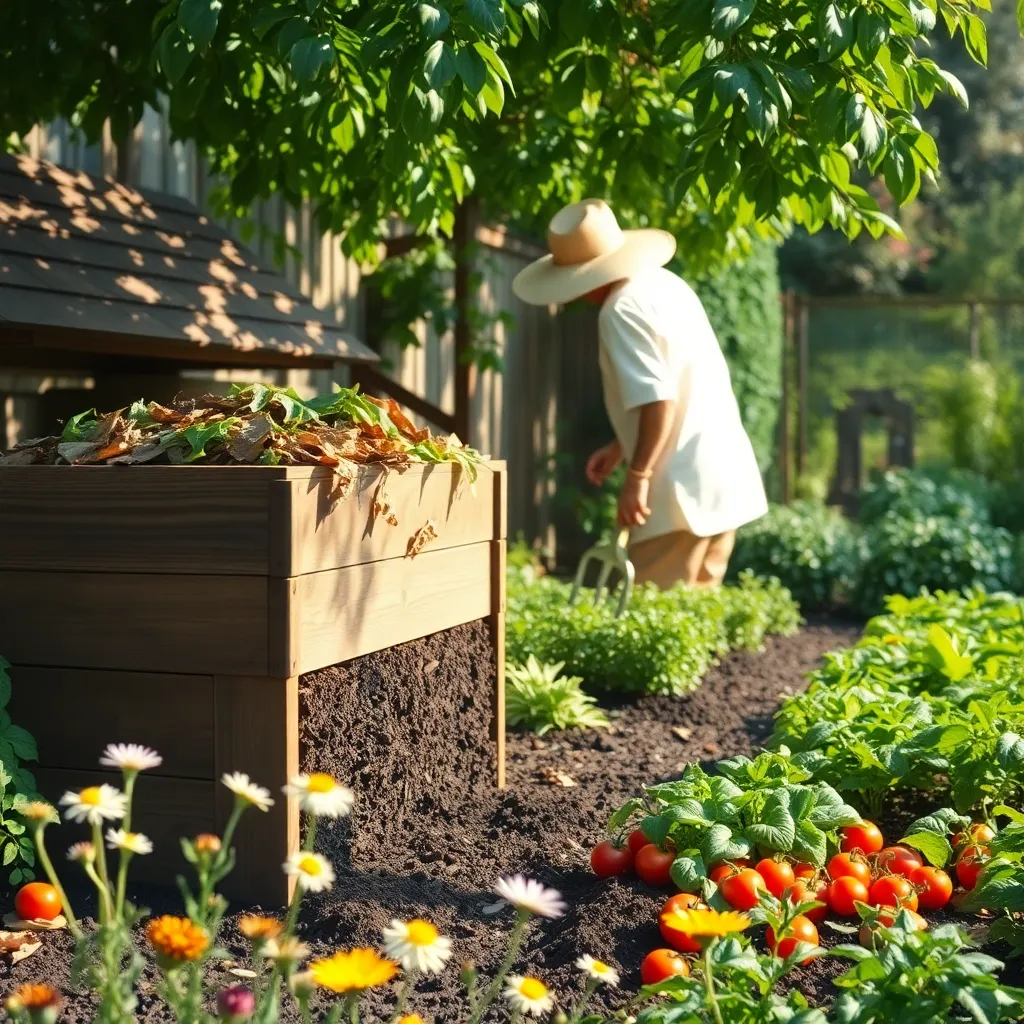
Turning your compost regularly is essential to maintain a healthy and productive compost pile. Aerating the pile by turning it helps speed up the decomposition process and prevents foul odors from developing.
Begin by using a garden fork or compost aerator to gently mix the materials. Turning the pile every 2-4 weeks ensures that all parts of the compost are exposed to air and moisture, which are critical for microbial activity.
While turning, check for any dry or overly wet spots and adjust accordingly. If you find dry patches, sprinkle a little water to maintain the right moisture level, and if it’s too soggy, add dry materials like straw or shredded cardboard.
For beginners, a simple rule of thumb is to ensure a balanced mix of ‘greens’ and ‘browns’ in the pile. Green materials like grass clippings and kitchen scraps provide nitrogen, while brown materials such as leaves and twigs add carbon, which is crucial for decomposition.
- Ensure your compost pile is at least 3×3 feet in size to retain heat effectively.
- Consider using a compost thermometer to monitor the internal temperature, which should ideally range between 135°F and 160°F for optimal decomposition.
Monitor Temperature Changes
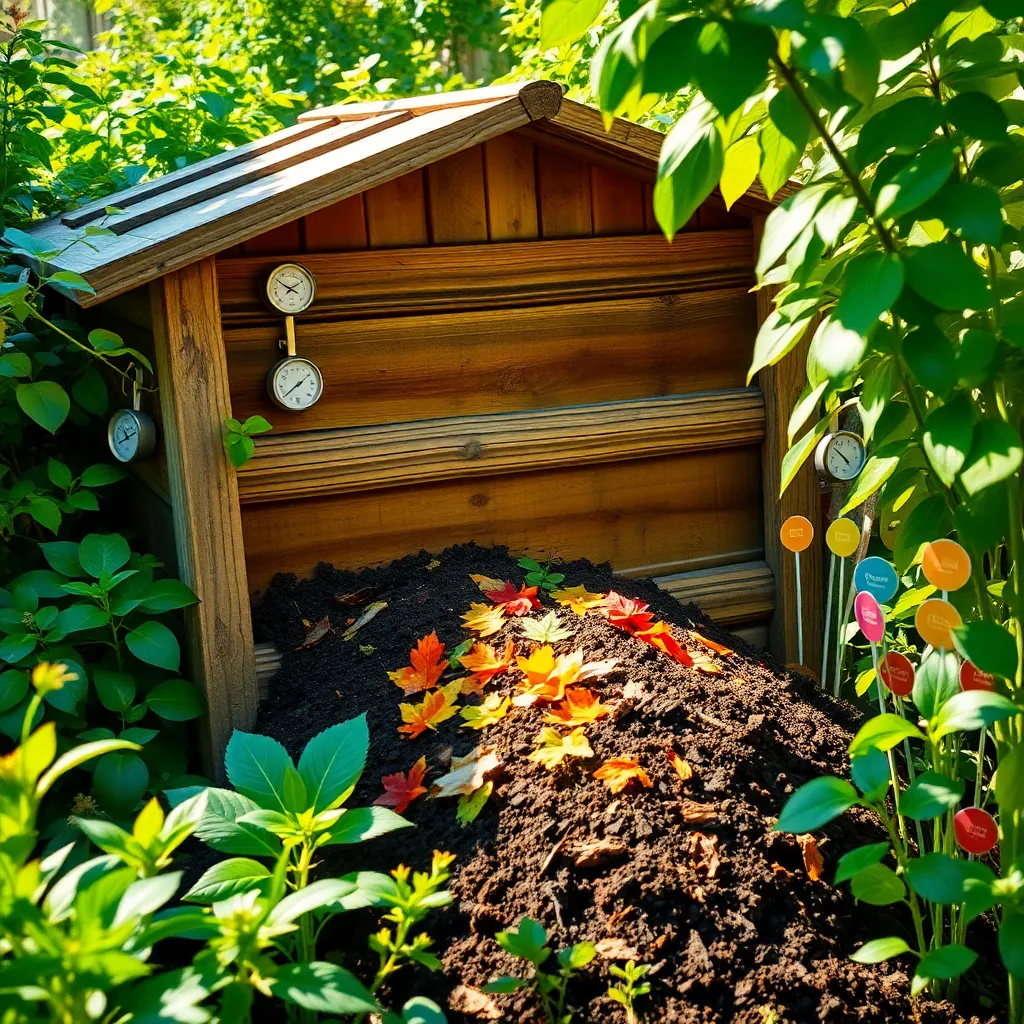
Monitoring temperature changes is a vital part of effective compost management. Compost piles generate heat as organic materials break down, so keeping an eye on these temperature fluctuations helps ensure optimal decomposition.
Use a compost thermometer to regularly check the internal temperature of your pile. Ideal compost temperatures range between 135°F and 160°F, which is hot enough to kill pathogens and weed seeds while speeding up decomposition.
For beginners, it’s important to understand that temperature can drop significantly in colder months. To maintain warmth, consider insulating your compost pile with straw or a tarp, which can help retain heat and keep the microbial activity going.
Advanced gardeners might experiment with different composting methods, such as hot composting, to maintain higher temperatures. This involves adjusting the ratio of greens and browns and turning the pile more frequently to introduce oxygen and stimulate heat production.
Adjust for Seasonal Climate
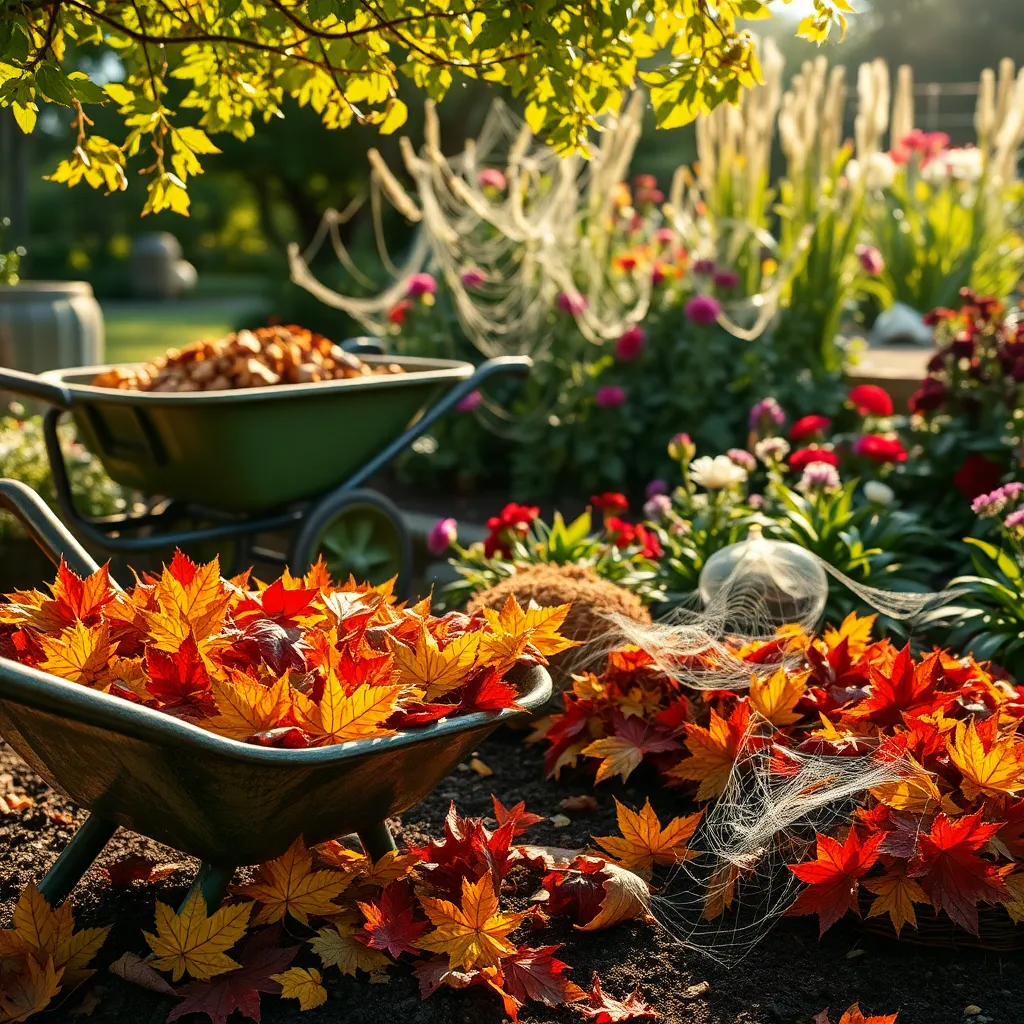
Adapting your composting efforts to the seasonal climate is essential for maintaining a healthy and productive compost pile. During colder months, consider insulating your compost with straw or a tarp to retain heat and keep microbial activity thriving.
In the spring and summer, your compost pile may heat up more quickly due to warmer temperatures, which can accelerate decomposition. Regularly turn your pile to ensure even aeration and moisture distribution, as this helps prevent overheating and ensures a balanced breakdown of materials.
As the weather transitions into fall, it’s a great time to add fallen leaves to your compost. Leaves are rich in carbon, which helps balance the nitrogen from kitchen scraps, creating a more effective composting process.
Advanced gardeners might explore using a compost thermometer to monitor internal temperatures, aiming for a sweet spot between 135°F and 160°F for optimal microbial activity. Adjust water content accordingly; dry, crumbly compost may require more water, while soggy compost could benefit from additional brown materials like shredded paper or cardboard.
Incorporate Fall Leaves Strategically
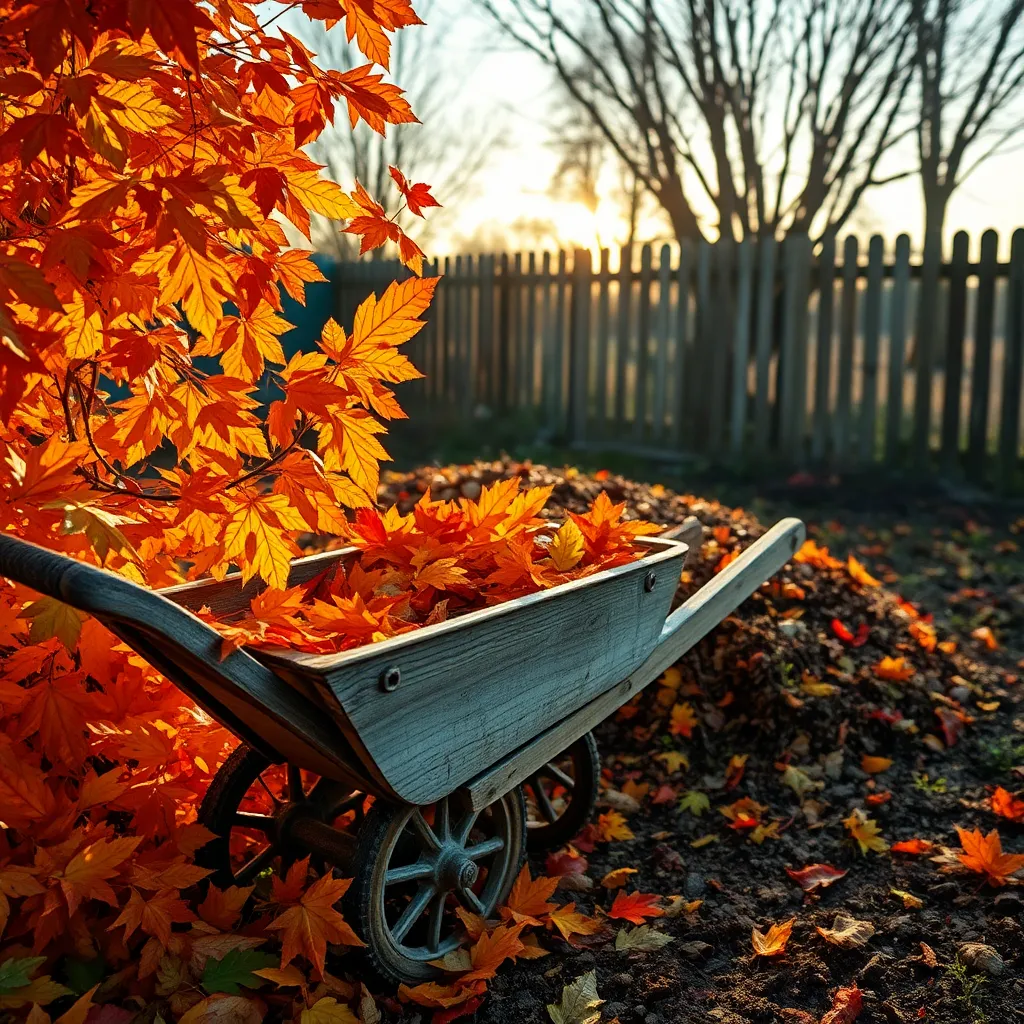
Fall leaves are a treasure trove for composting enthusiasts, providing a plentiful source of carbon-rich material. To maximize their benefits, shred the leaves before adding them to your compost pile, as this increases the surface area for decomposition and speeds up the composting process.
Begin by collecting leaves from your yard, ensuring they are free from disease or pesticide residues. Mix these shredded leaves with green materials like grass clippings or kitchen scraps, maintaining a balance of about three parts leaves to one part greens for optimal composting.
For those with more experience, consider using fall leaves to create a leaf mold, a simple yet powerful soil conditioner. Pile the leaves in a corner of your garden or in a separate bin, keeping them moist and turning them occasionally, and within a year or two, you’ll have a rich, crumbly leaf mold perfect for improving soil structure.
Incorporating leaves directly into garden beds is another strategic use, acting as a natural mulch that suppresses weeds and maintains soil moisture. Spread a thin layer over the soil in your vegetable or flower beds, ensuring that the leaves do not mat together, which could inhibit water penetration.
Enhance Winter Decomposition
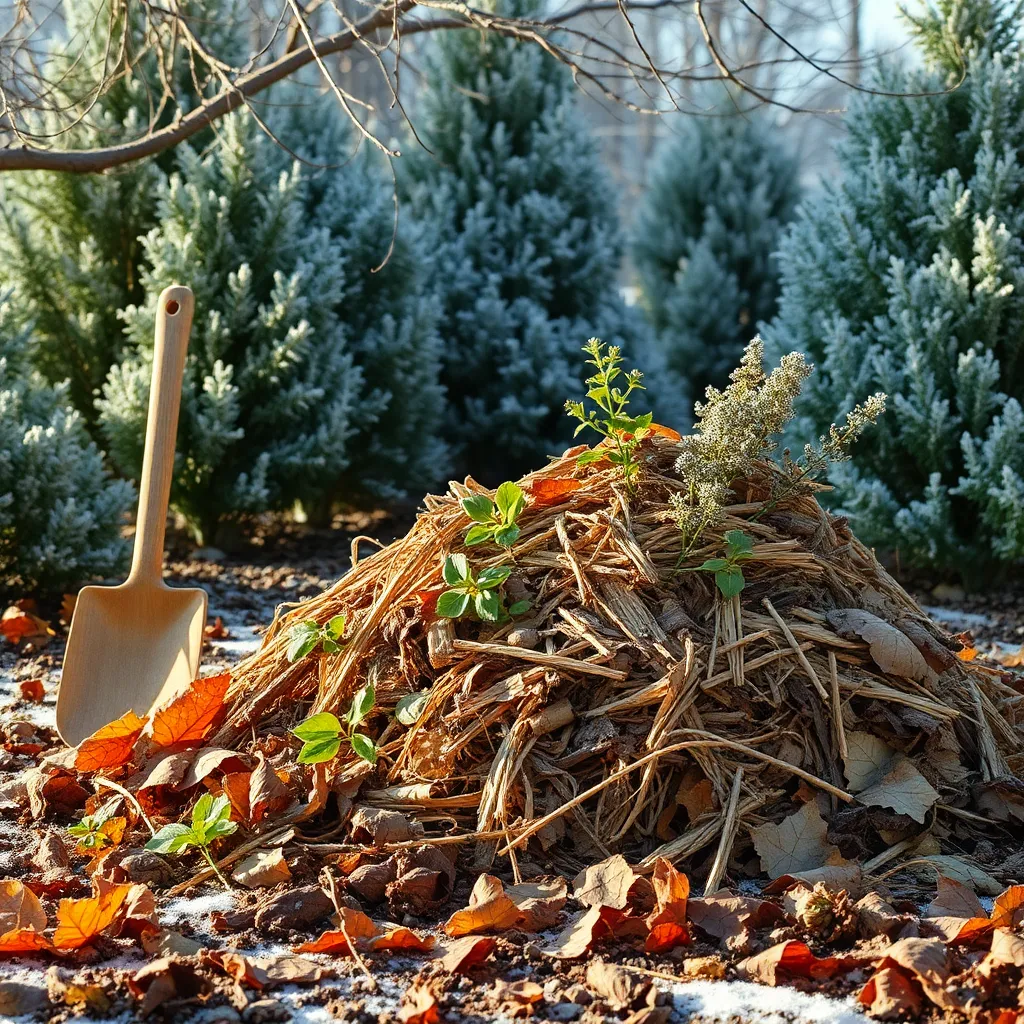
To enhance winter decomposition in your compost pile, consider adding a mix of high-carbon materials like shredded newspaper alongside nitrogen-rich kitchen scraps. Layering these materials effectively can help maintain a balanced environment conducive to decomposition even in cooler temperatures.
Turning your compost pile weekly during winter can significantly boost the breakdown process. This aeration introduces oxygen into the pile, which is vital for the activity of decomposing bacteria.
Keep your compost pile insulated to retain heat, which is crucial for microbial activity. Use materials like straw, hay, or even a tarp to cover your pile, as these layers help trap the warmth generated by decomposition.
Watering your compost pile is essential, even in winter, to maintain the necessary moisture level for decomposition. Aim for a consistency akin to a damp sponge, ensuring that the microbial processes continue despite the cold weather.
Harvest Finished Compost
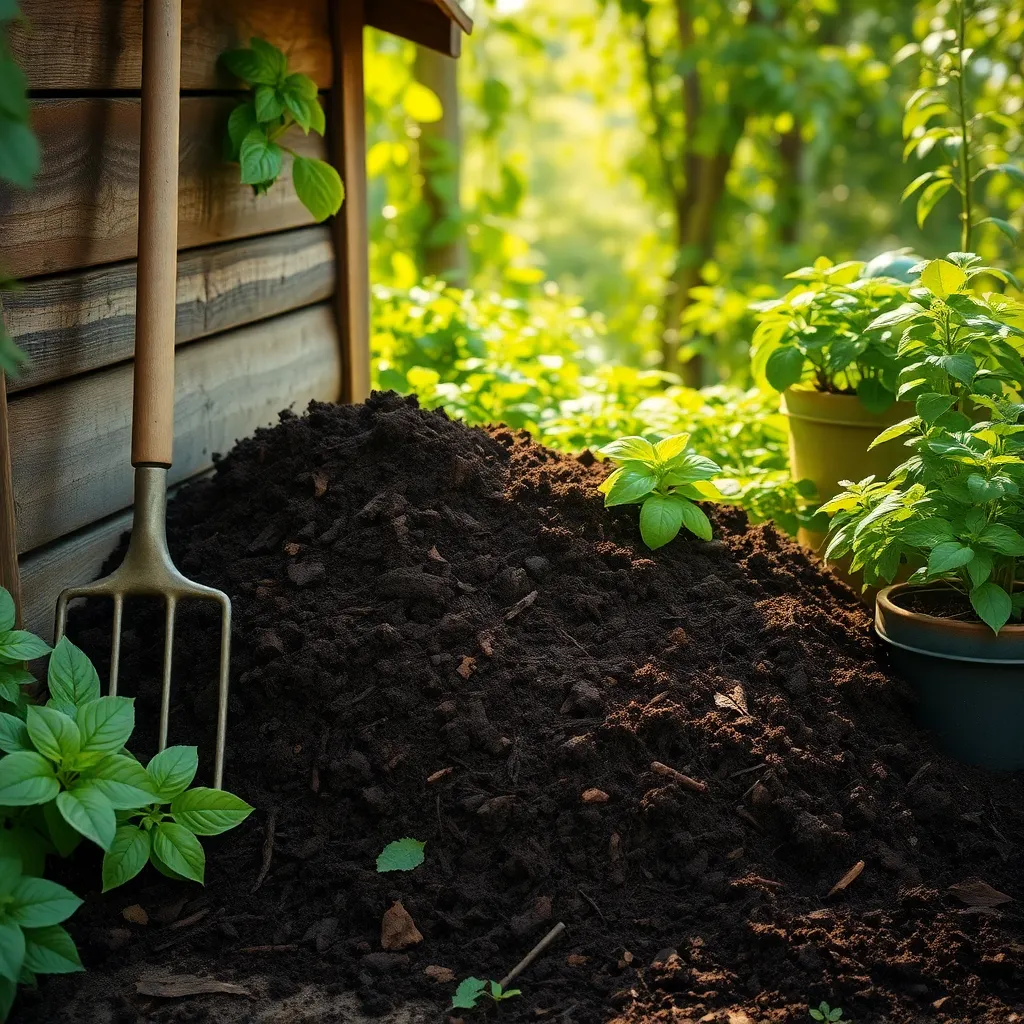
As the composting process concludes, it’s time to harvest your finished compost. This rich, dark material, often referred to as “black gold,” is an excellent addition to your garden soil, enhancing its fertility and structure.
Start by identifying when your compost is ready to harvest; it should be dark, crumbly, and earthy-smelling. A good rule of thumb is that well-maintained compost can be ready for use in about six months, but it may take longer depending on conditions.
Use a screen or sifter to separate the fine, finished compost from larger, unfinished pieces. These larger pieces can be added back to your compost pile to continue decomposing and will eventually become part of your next batch.
For application, spread a 1-2 inch layer of finished compost onto your garden beds and gently work it into the top few inches of soil. This will provide a slow-release source of nutrients to your plants over the growing season.
Adding compost to your soil improves its texture, which helps with water retention and drainage. Advanced gardeners might consider brewing compost tea, a liquid extract that can be used to water and nourish plants, providing an immediate nutrient boost.
Remember to keep your compost pile active by regularly adding new materials and turning it as needed. This ensures that you maintain a steady supply of compost for your garden year-round.
Conclusion: Growing Success with These Plants
In wrapping up our ‘9 Seasonal Composting Guides’ for fostering thriving relationships, we explored key concepts that align with the natural cycles of growth and renewal. We delved into nurturing open communication, cultivating emotional intelligence, and embracing change as seasons shift. We also highlighted the importance of setting goals together, celebrating mutual achievements, and practicing gratitude to strengthen bonds. Additionally, we emphasized resolving conflicts with empathy, maintaining individuality while growing together, and investing in shared experiences to deepen connections.
To put these insights into action, why not start by having an open conversation with your partner about which concept resonates most with both of you? This could lay the groundwork for a relationship that flourishes with each passing season.
Remember to save or bookmark this article, as it will serve as a valuable resource, guiding you through the ebbs and flows of your relationship journey. By doing so, you are taking a proactive step towards ensuring your relationship blossoms year-round.
As you continue to nurture and evolve your partnership, know that with dedication and intention, your relationship can thrive in the most enriching ways. Here’s to a future filled with love and growth!

